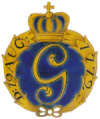
Photos and personal reflections by
Jan-Erik Nilsson and Cheryl Marie Cordeiro
Early in the morning the last preparations for the grand opening was well under way. The entrance and reception area (top right) that was to lead the Guests of Honor up to the actual exhibition hall was being prepared at the east side of the Meridian gate (Wumen) of the Forbidden City. The imposing hall directly on top of the Wumen was where the exhibition was held. This must be the most imposing exhibition hall ever, for a Chinese porcelain exhibition.
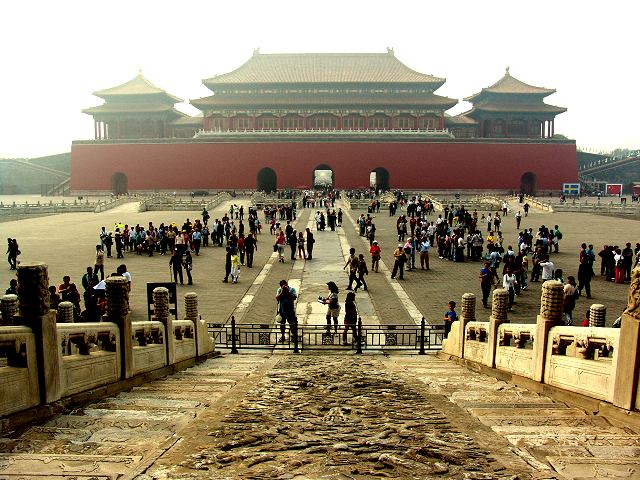
A spectacular view of Meridian Gate (Wumen) of the Forbidden City, the crests of the roof tops enveloped in a slight morning mist.
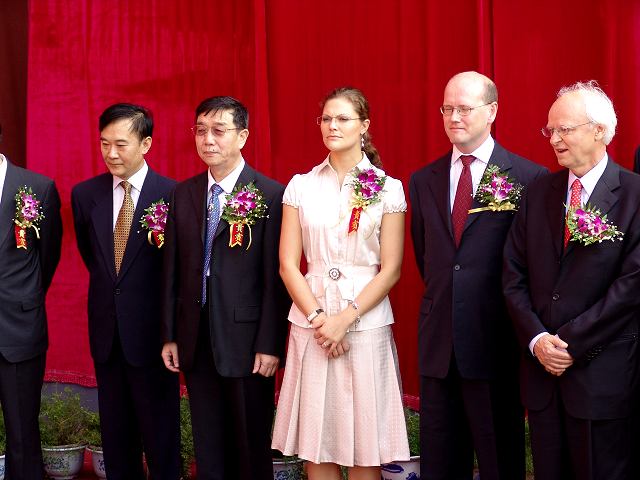
The Opening Ceremony begins. HRH the Swedish Crown Princess Victoria in the middle has to her left the Swedish Minister for Industry and Trade Mr. Thomas Östros and the Swedish Ambassador in China Mr. Börje Ljunggren. To her right, Chinese Deputy Minister of Culture, Director of Palace Museum, Mr. Zheng Xinmiao and Deputy Director of Palace Museum, Mr. Li Ji.
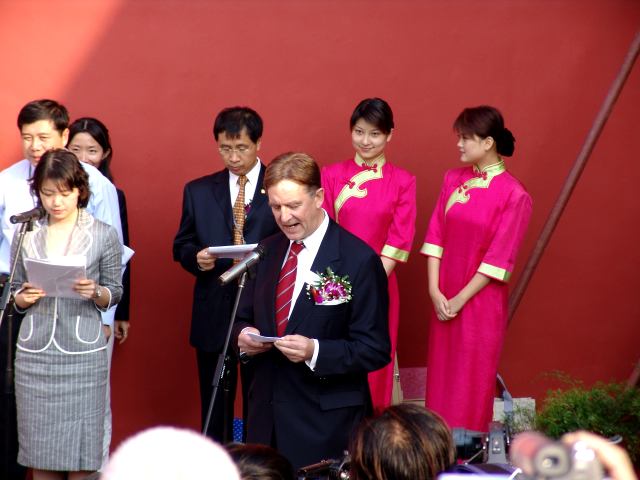
The main sponsor of the whole event - Volvo - was represented by the Senior Vice President of AB Volvo Mr. Karl Erling Trogen who also took the opportunity to present to the Palace Museum a donation of 18 selected pieces of porcelain from the exhibition.
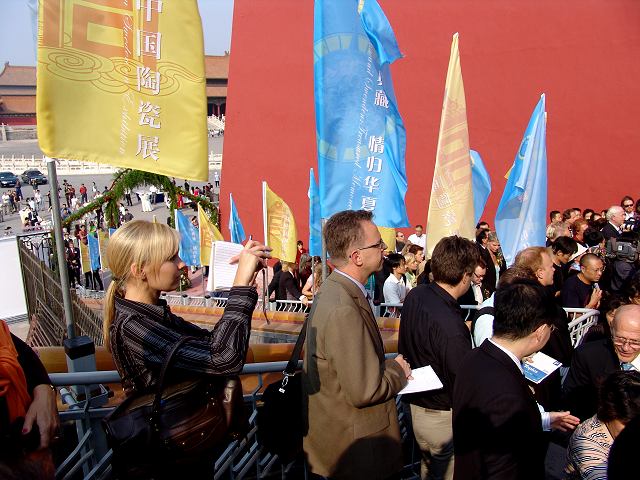
The crowds during the official speeches at the Opening Ceremony. The autumn heat and awkward standing arrangements for the guests at the event was eased by the cool and inviting Beijing winds that swept around us. All at once I felt surreal listening to the words exchanged between the two countries and realizing that this place, where I stood for the event, had existed for hundreds of years before. this moment. The feeling of being present in the 'here and now' in such a historic place made me feel as if I couldn't tell time any longer. I half expected the Emperor Qianlong to pop down from the hall above to join the crowd or more likely some angry eunuchs coming around to tell us to immediately clear the stairs up to the Wumen hall of ceremony because we had no business here. The atmosphere was overpowering and the historic event we were part was just one in the long history of this place. Still strangely appropriate and one to rejoice. To the bottom right, the Swedish exhibition commissar, writer and scholar Jarl Vansvik, making his way up the stairs, towards the exhibition hall.
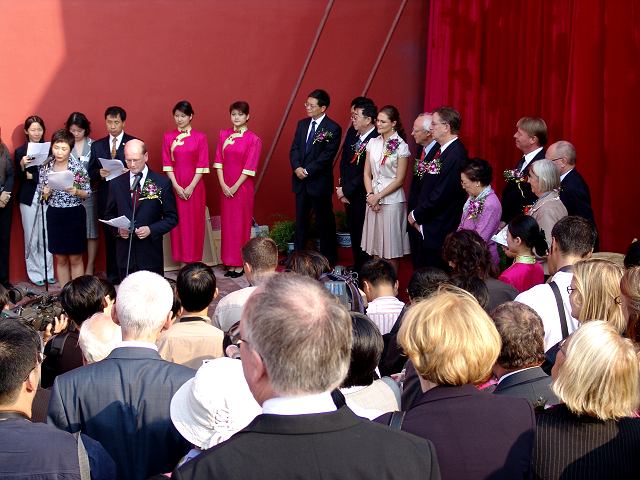
At the stage the Swedish Minister for Industry and Trade Mr. Thomas Östros giving the introductury speach to the event, immediately to be followed by the Chinese Deputy Minister of Culture, Director of Palace Museum, Mr. Zheng Xinmiao. Beside Mr. Östros, a Chinese translator.
The pretty girls in the fuschia colored qipaos were escorts to the event.
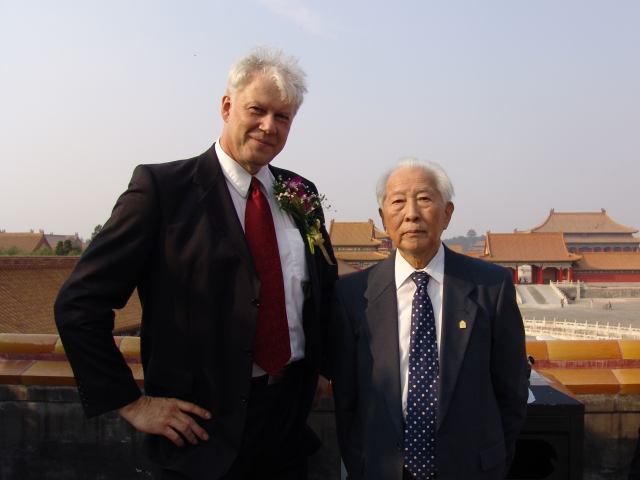
Jan-Erik Nilsson and Professor Geng Baoshang.
Meeting with Professor Geng Baoshang well known for his profound writings and scholarship on Chinese Imperial porcelain was one of the high points of the opening ceremony, however outside of the official program.
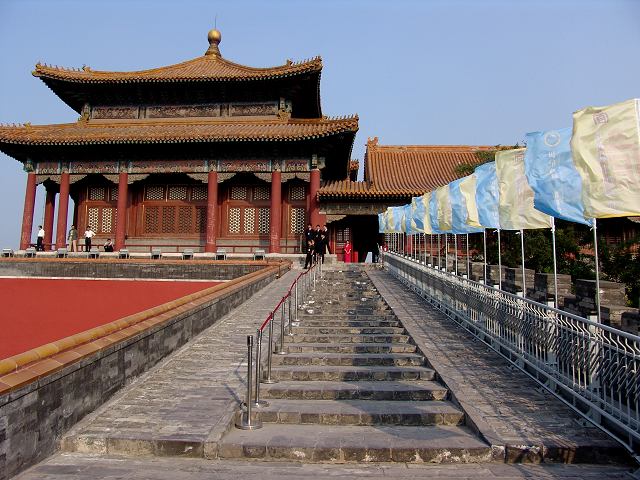
The stone stairway leading up to the Exhibition Hall itself, the Swedish flag colours flanking the stairs. The architecuture of the place is something quite amazing.
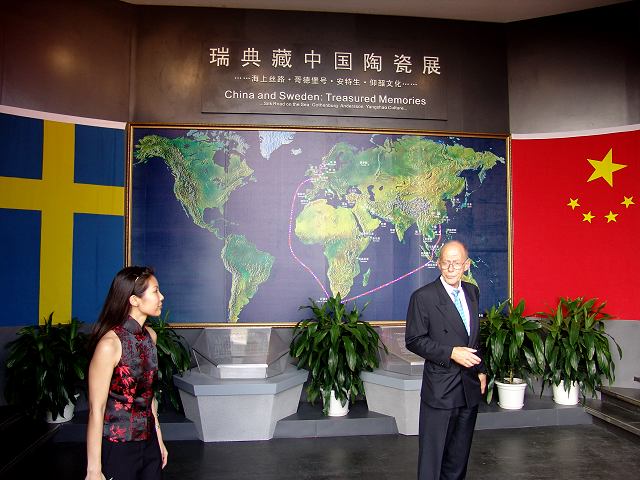
Cheryl Marie Cordeiro and exhibition commissary Jarl Vansvik.
The entrance to the Exhibition Hall with the flags of the two countries and a trading route map of the East Indiaman Gotheborg III, tracking the ship's voyage to come.
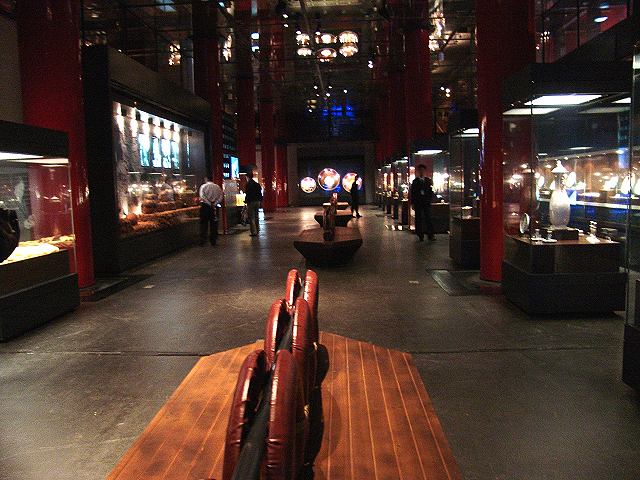
An inside view of the Exhibition Hall.
Comparing the inside with the outside architecture we find that what appears to be two floors is actually a high ceiling with only a balcony running inside the windows of the second upper facade tier. To the immediate left the Ru yao dish from The Röhss Museum was displayed in a showcase of its own. At the press preview a reporter had tried to open that showcase to get a better picture with the cabinet glass away, causing quite a stir among the security staff.
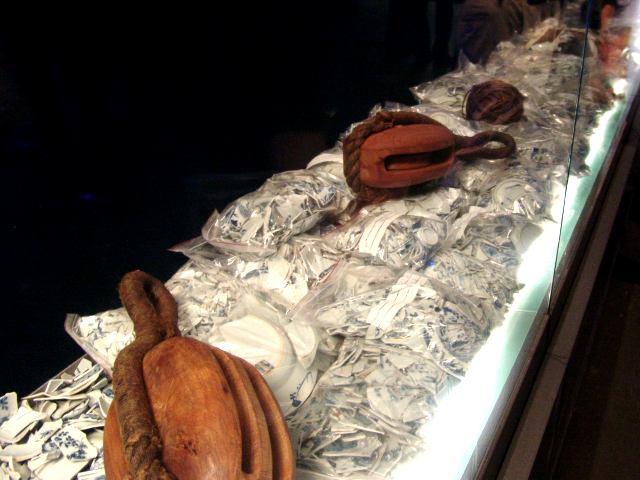
Shards from the Wästfeldt's excavation of the East Indiaman Gotheborg.
The shards brought to the exhibition comes from the deposition of these, the Gothenburg Maritime Museum. Much of the shards were still in their bags, sorted according to their find numbers, pinpointing their exact location on the wreck site. All in all some 7 tons of shards was brought up, cleaned, sorted and registered during the excavation, the shards on display here being a mere fraction of the total find.
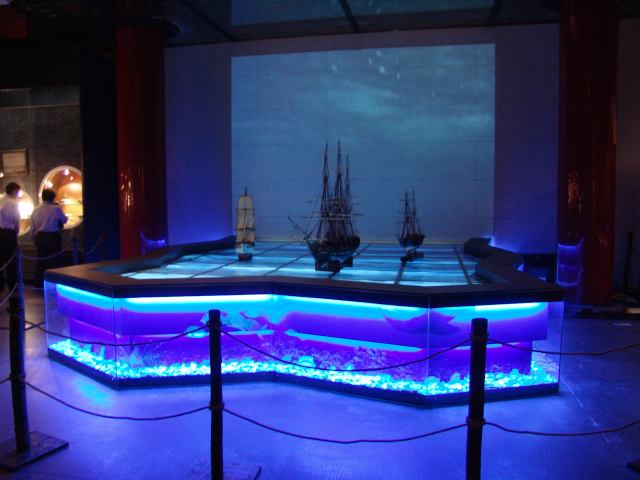
Models of 18th century East Indiamen - or, western ships trading to China and 'All countries East of India' as the old documents also on display had it.
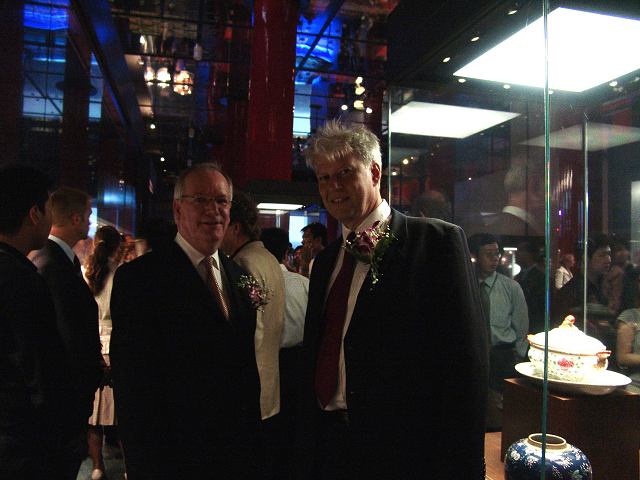
Lars-Olof Lööf, Head of the Collections Departments of the Gothenburg City Museum in Sweden (left) and Jan-Erik Nilsson.
In the background the Royal Entourage with HRH the Crown Princess Victoria.
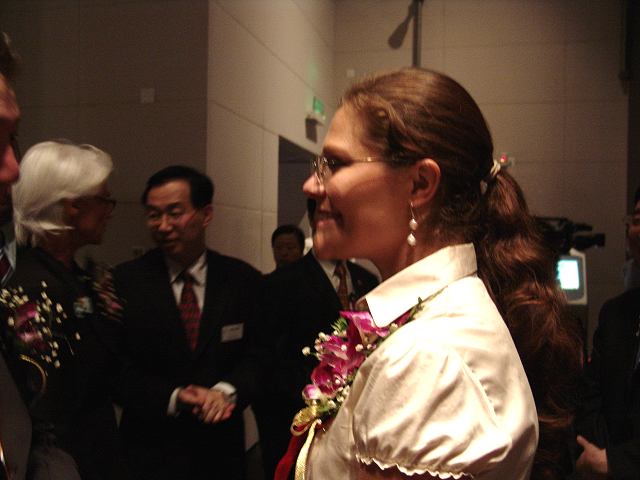
HRH the Crown Princess Victoria.
With HRH Victoria only meters away it was only a matter of time before the Royal Entourage caught up with us and I had the pleasure of meeting HRH Victoria in person. Being where we were, I could not help asking for her impression of this Imperial Palace - the Forbidden City - so far, and her thoughts on how it compared to her Stockholm surroundings. I hope I am not overstepping any confidences if I tell she felt it was a magnificent place and that she possibly could consider living in such a place like this, but perhaps not back in the Dynastic era.
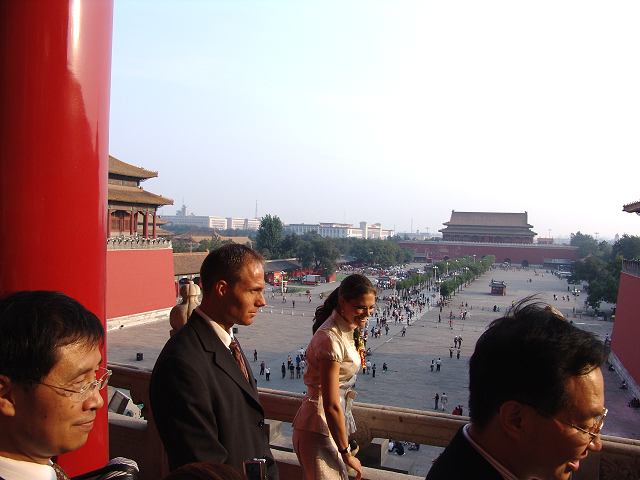
An interesting tour of the Exhibition comes to an end and here, the Royal Entourage exits with as much, if not more, attention as when they entered. At least 25 photographers and reporters dashed after HRH Victoria, not shown in this picture. It was the closest to a paparazzi rush I have witnessed.
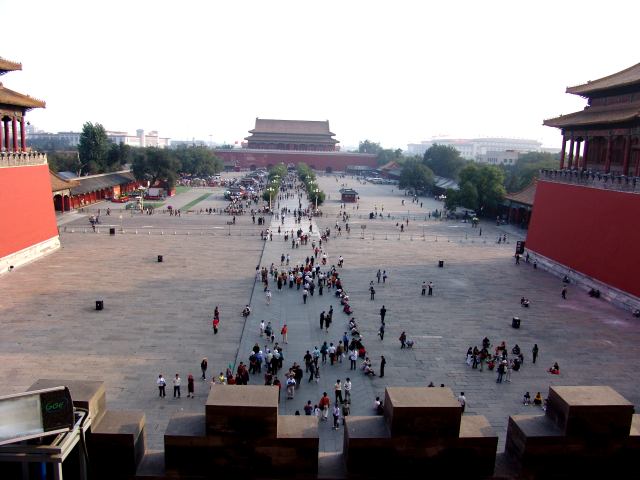
This view directly outside the entrance of the exhibition hall would be the view of the Emperor when doing his announcements to the crowd outside the Wumen. It was a strange feeling standing here. It was almost as if the emperor was just next to you. From here you were looking at the roof tops of Beijing in same light as he had seen and the wind on your face was just the same that has been here from the earliest time. It was just the crowd below that was new, and yes, that you actually had the right to be here and just look.
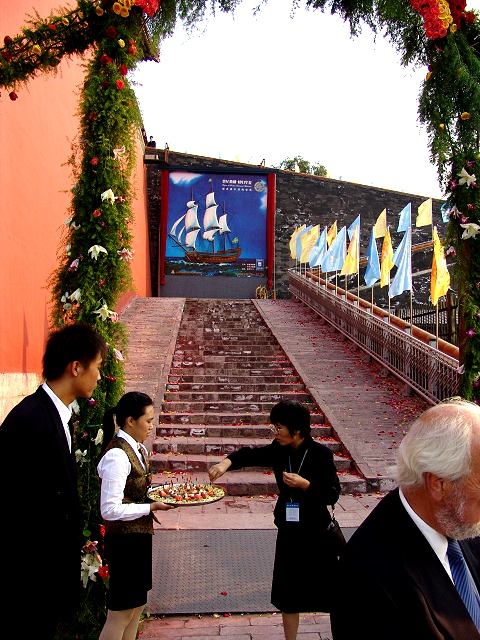
After the storm... the calm.
The crowds have dispersed, having had their fill of the treasures on display and soaking up the atmosphere of the entire event. One of my final shots for the event was of the stone stairway leading up to the exhibition hall itself with a picture of the East Indiaman Gotheborg III unveiled during the Opening Ceremony. I took a moment to reflect on the picture and on Her. I can only imagine what Her arrival in Canton next year would be like, the reality will overshadow the picture in an instant! In the foreground of the picture is a show of the well thought out hospitality of the sponsors that never failed to impress. Food and drinks continued to be served even as the guests were leaving, ensuring at all stages through the event, the guests were well fed and happy.
Photos and personal reflections by
Jan-Erik Nilsson and
Cheryl Marie Cordeiro